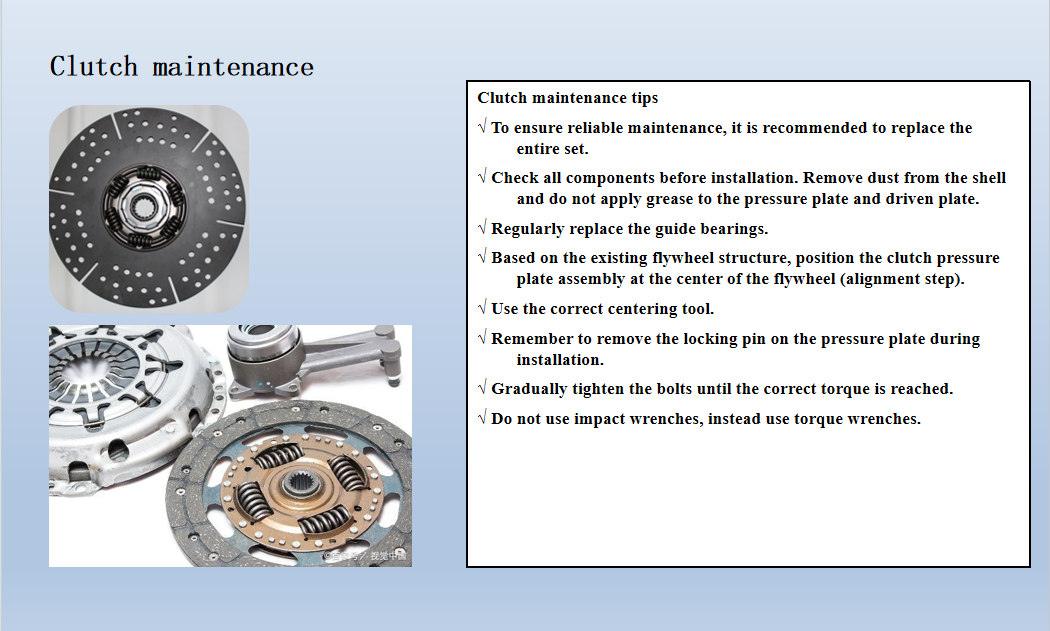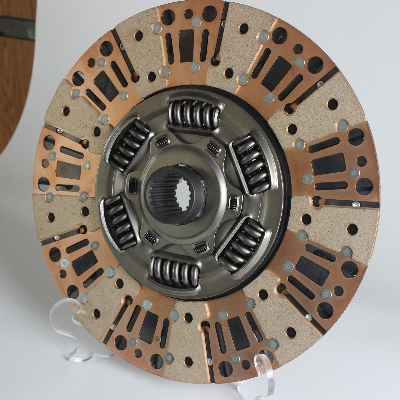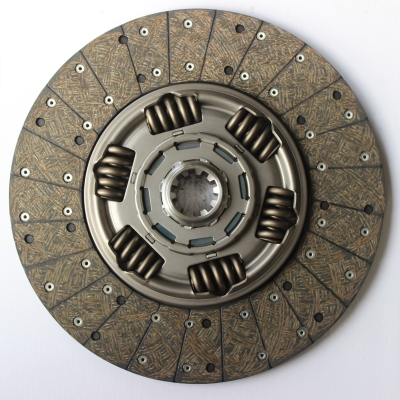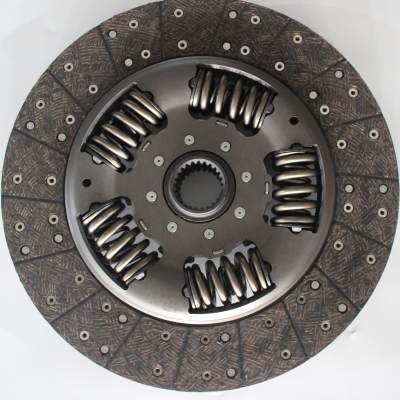Introduction to automobile clutch
Introduction to automobile clutch
The clutch is located in the flywheel housing between the engine and the gearbox,
and the clutch assembly is fixed on the rear plane of the flywheel with screws,
and the output shaft of the clutch is the input shaft of the gearbox.
During the driving of the car, the driver can press or release the clutch pedal as needed,
so that the engine and the gearbox are temporarily separated and gradually engaged to cut off
or transmit the power input from the engine to the transmission.
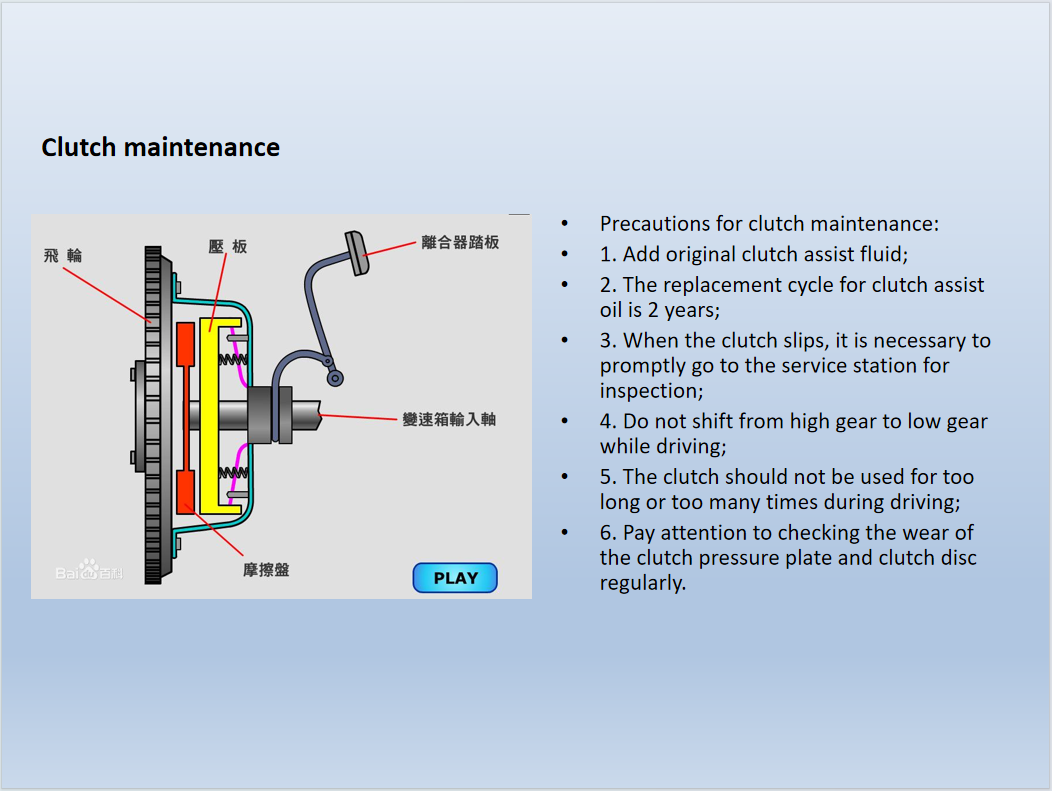
A mechanical part that can engage or separate the drive shaft and the driven shaft at any time as required by the work.
It can be used to control the starting, stopping, shifting and reversing of the machine transmission system.
There are many kinds of clutch, according to the nature of work can be divided into:
① Control clutch.
Its control methods are mechanical, electromagnetic, pneumatic and hydraulic, etc.
Such as embedded clutch (through the teeth, teeth or keys of the momoism to transfer torque),
friction clutch (using friction to transfer torque), air flexible clutch (with compressed air tire expansion and contraction
to manipulate the friction part of the engagement or separation of the clutch),
electromagnetic slip clutch (with magnetic current to generate magnetic force to transfer torque),
magnetic powder clutch (magnetic powder magnetized by the excitation coil, magnetic powder.
Forming magnetic powder chains to transmit torque).
② Automatic clutch.
With a simple mechanical method to automatically complete the joint or separate action,
and is divided into safety clutch (when the transmission torque reaches a certain value,
the drive shaft can be automatically separated, so as to prevent overload and avoid damage to important parts in the machine),
centrifugal clutch (when the speed of the drive shaft reaches a certain value,
Due to the role of centrifugal force can make the drive shaft between the connection or more than a certain speed can be separated by itself),
directional clutch (also known as beyond the clutch, the use of ratchet - ratchet pawl engagement or roller,
wedge wedge action unidirectional transfer of movement or torque,
when the drive shaft reversal or speed is lower than the driven shaft, the clutch will automatically separate).
